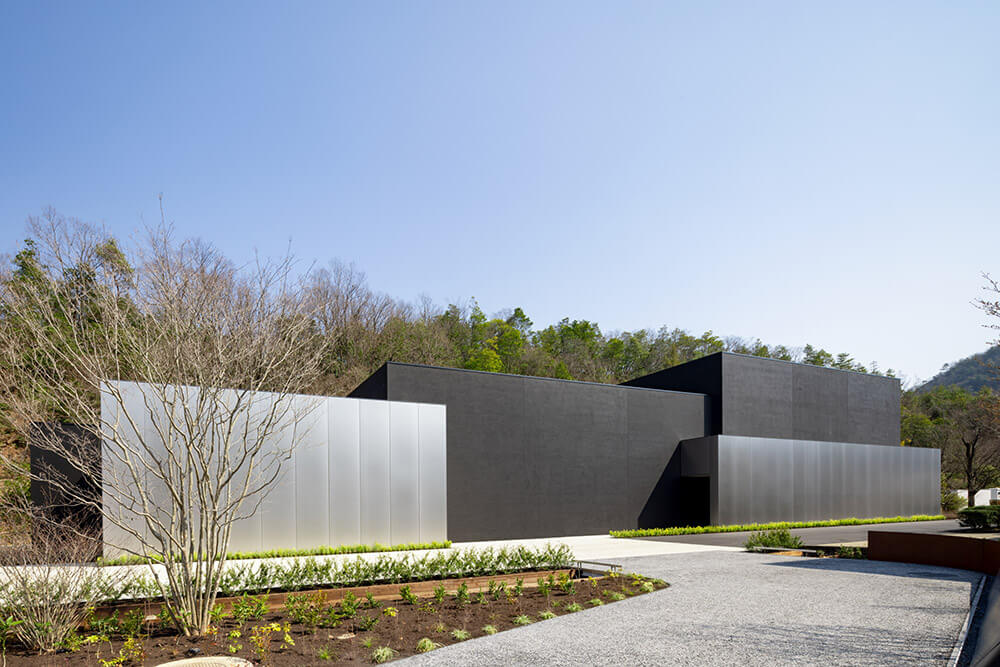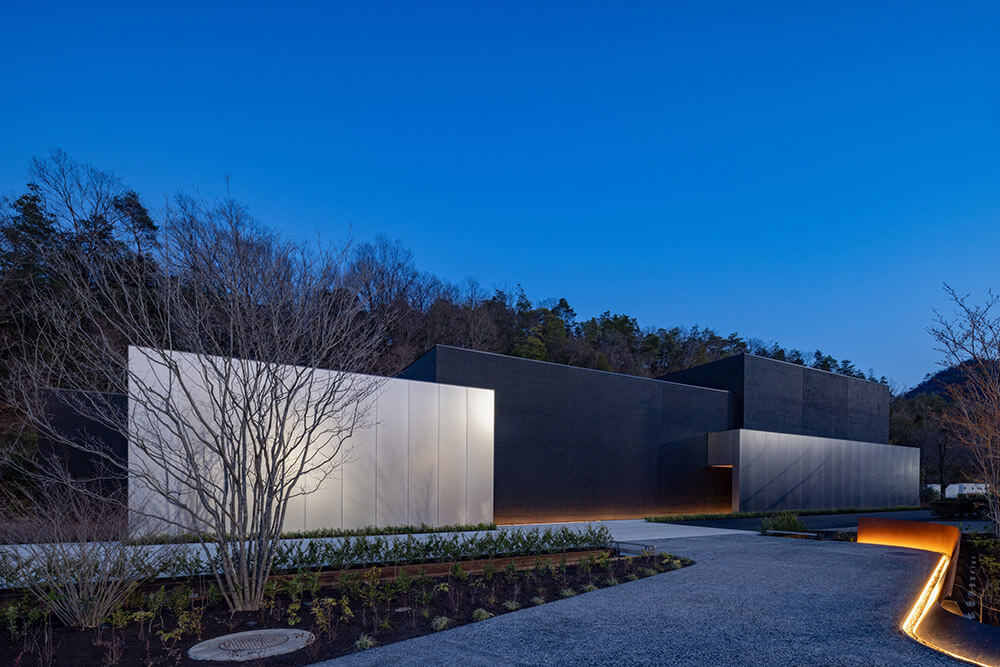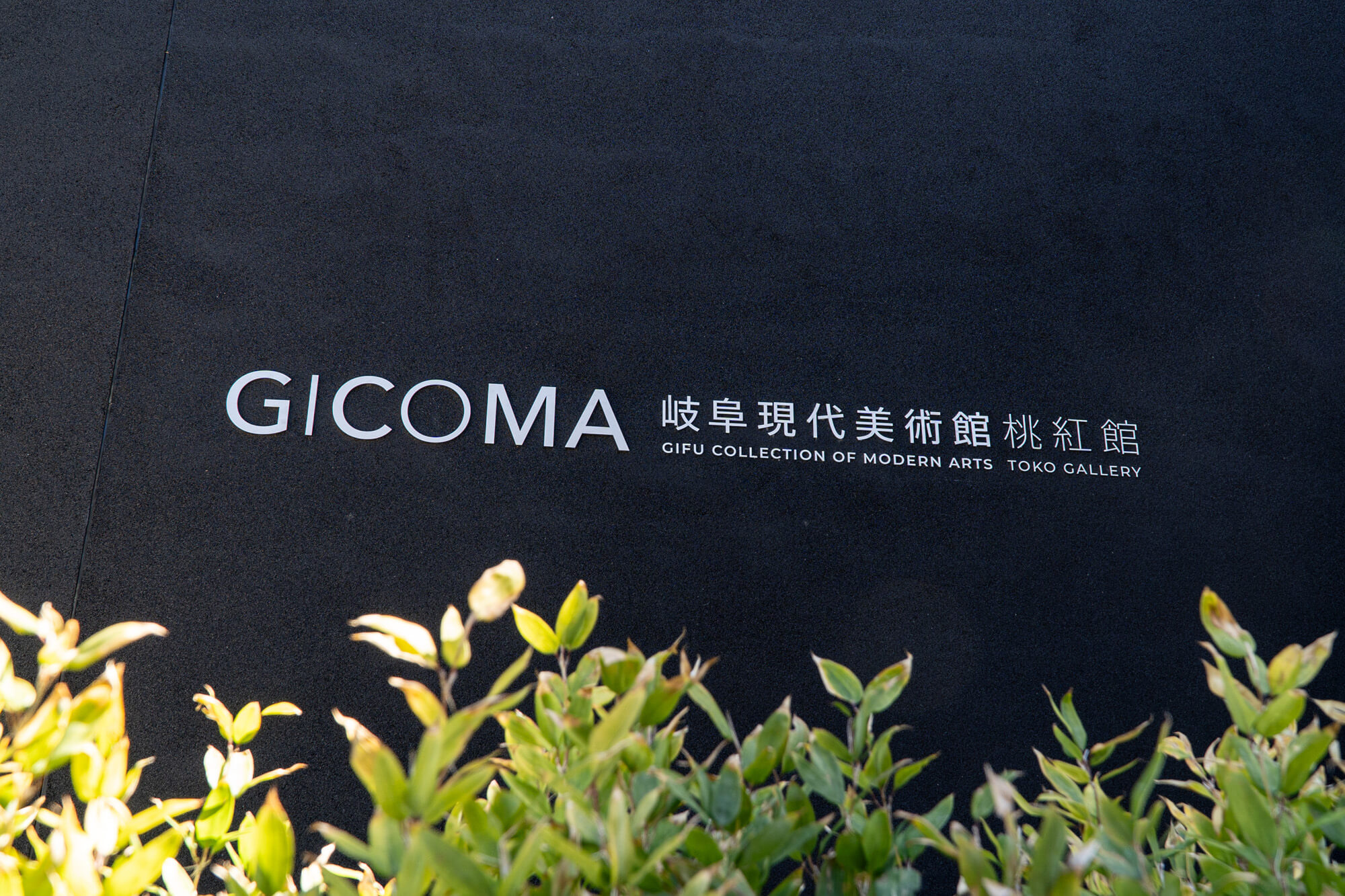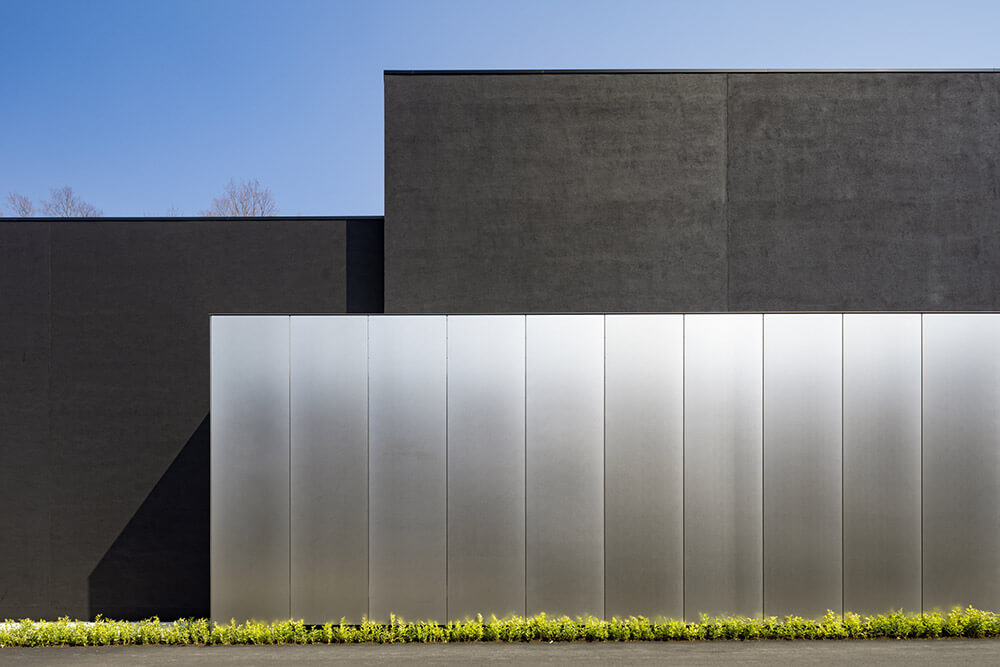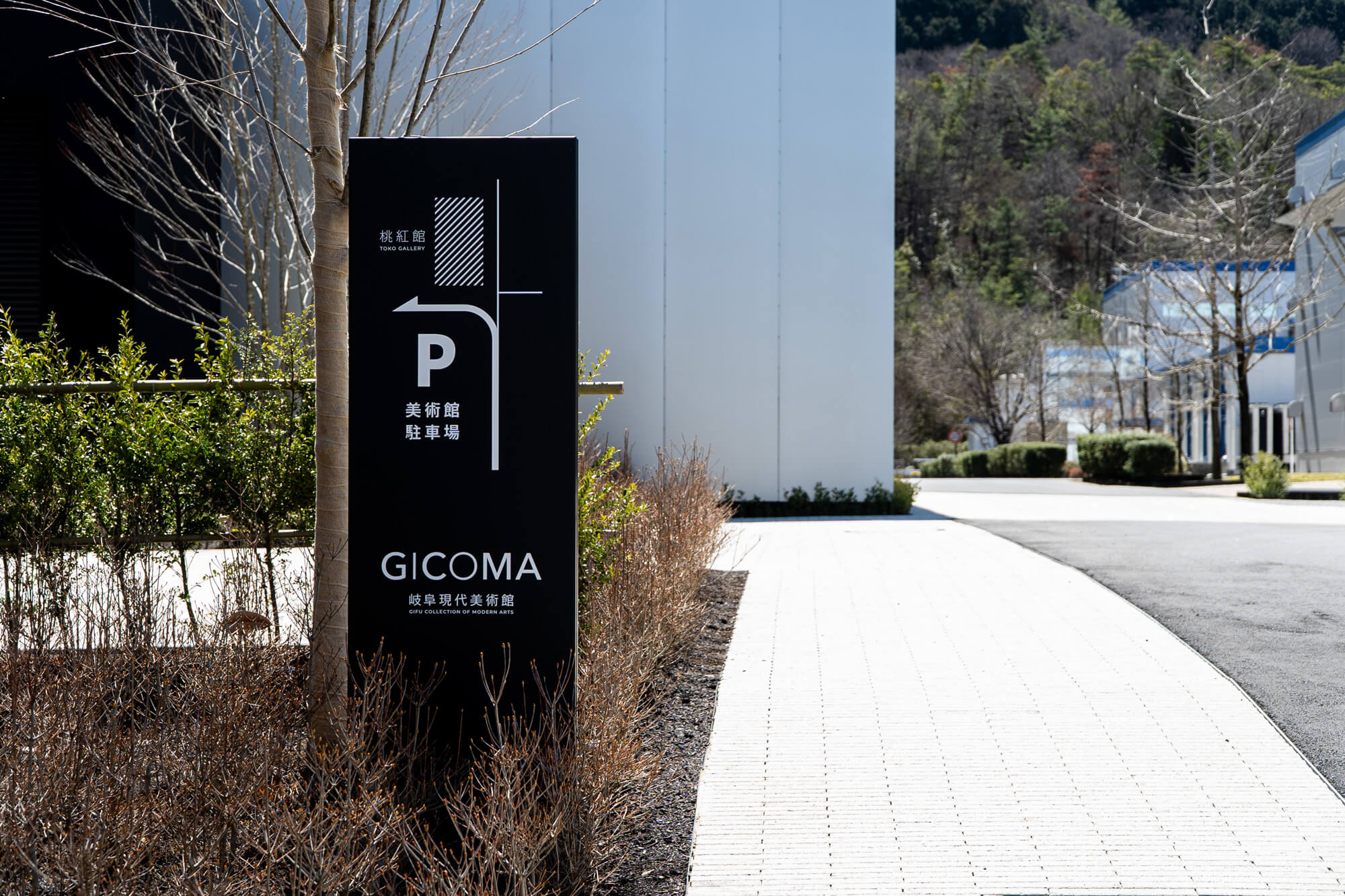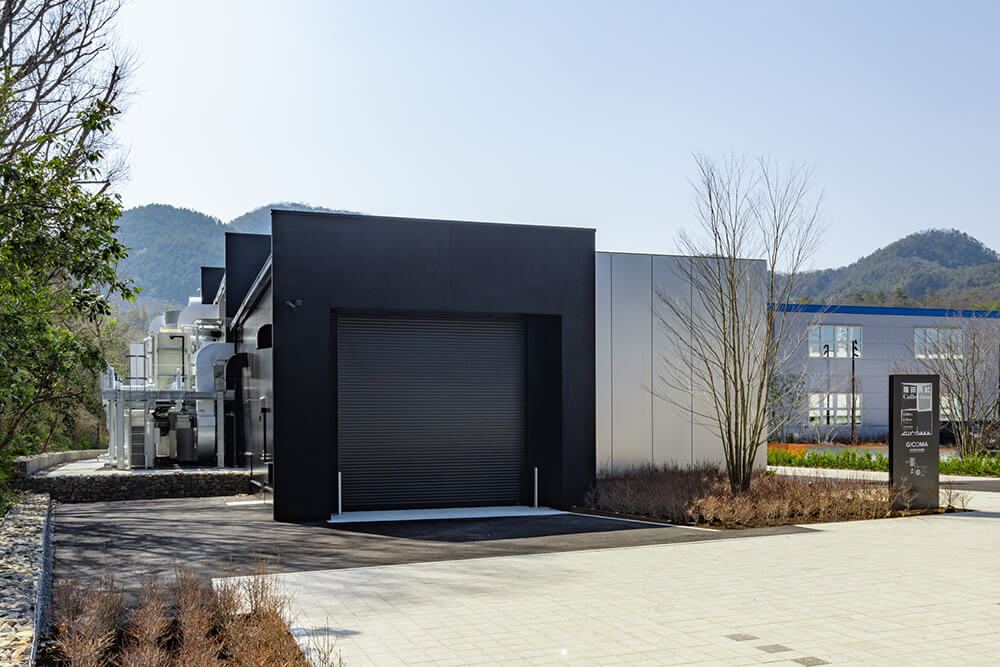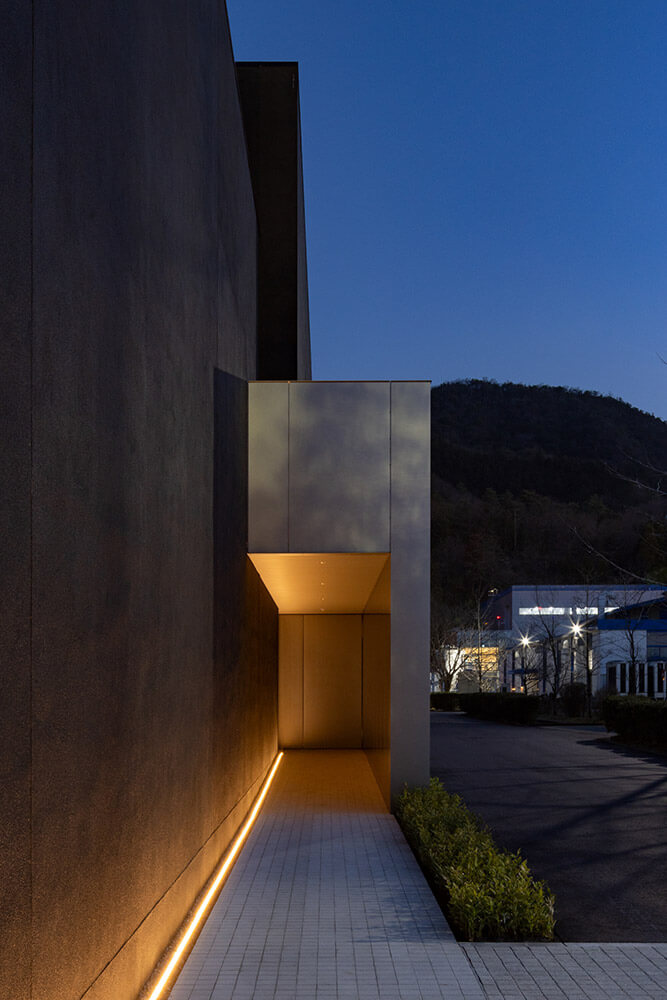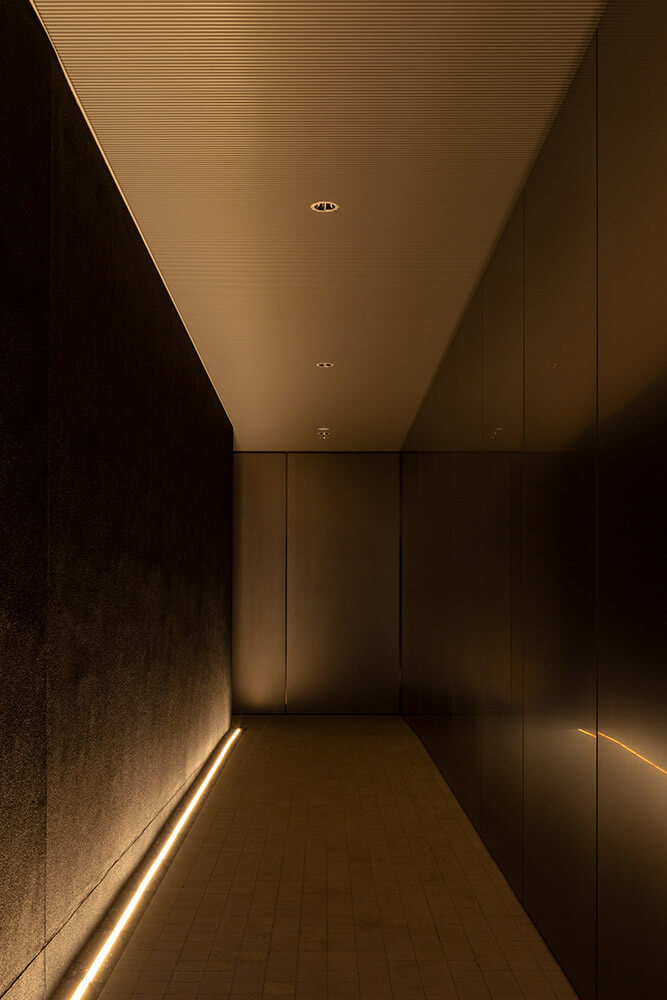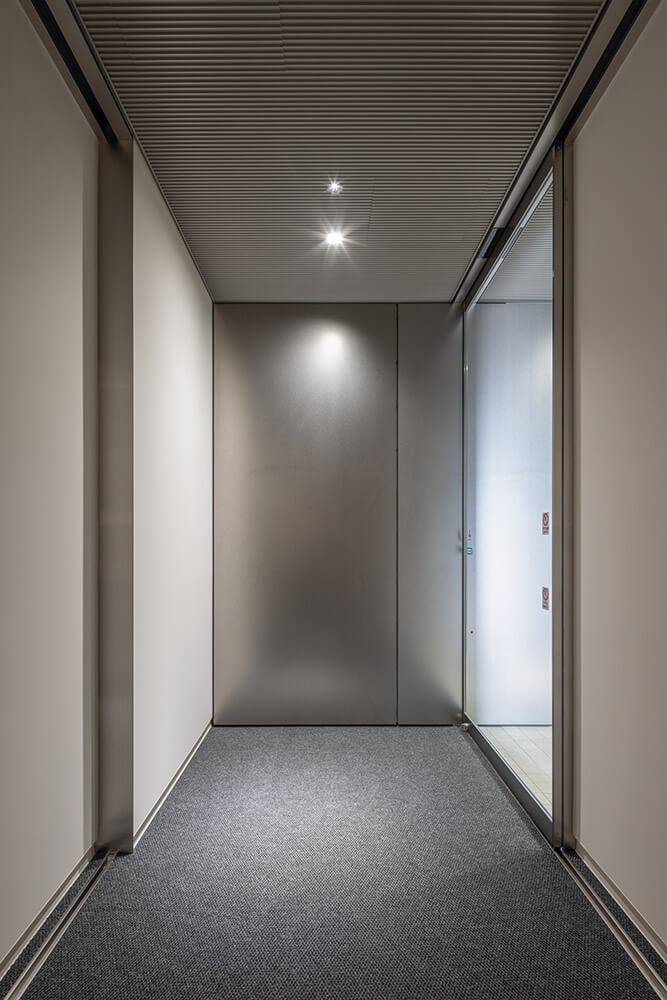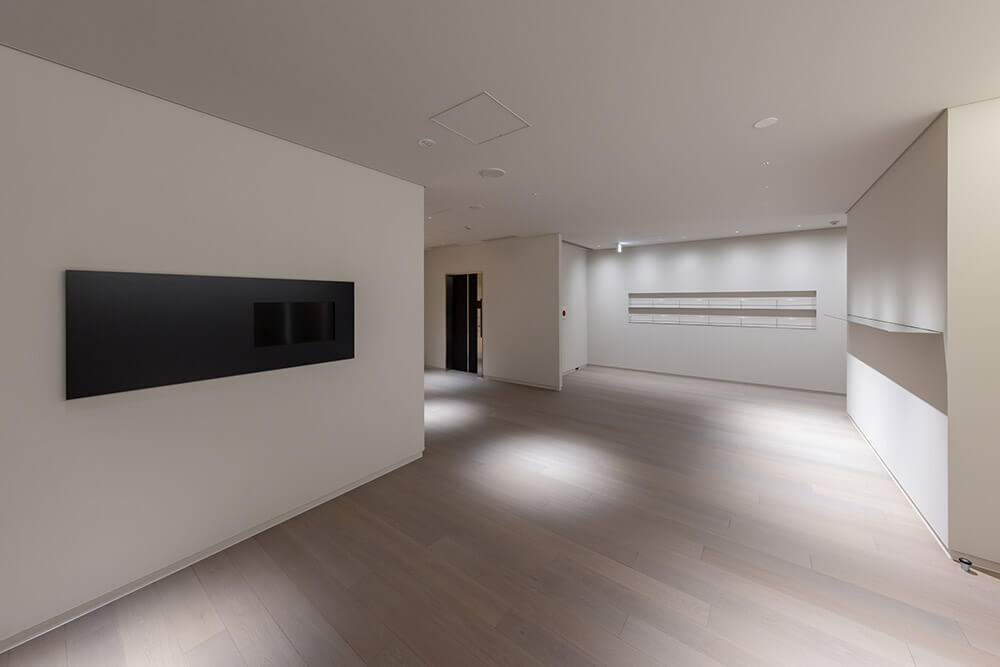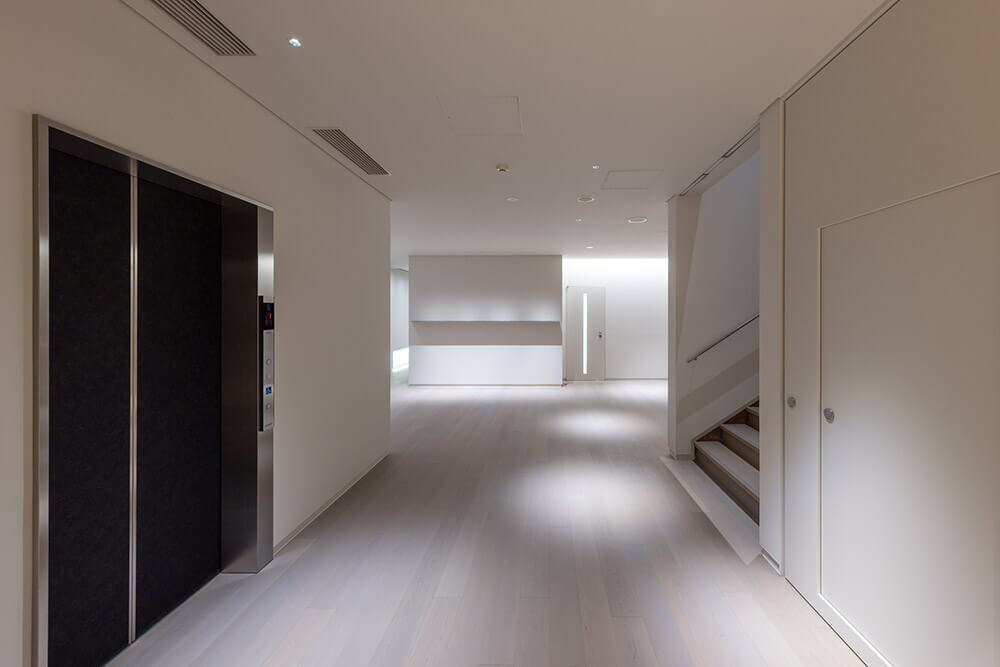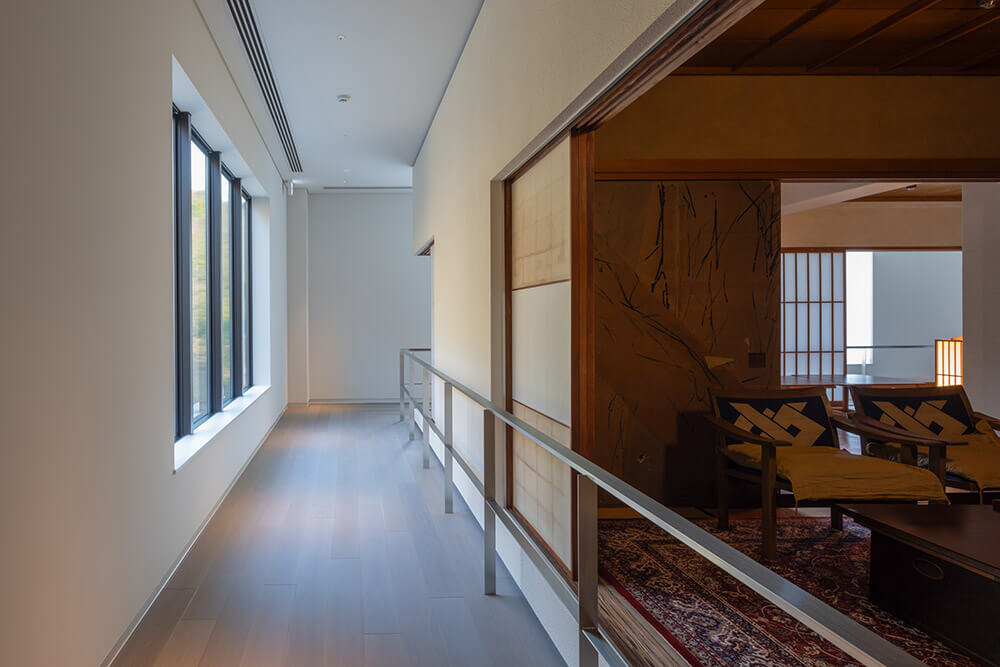Toko Gallery

The Toko Museum opened on March 28, 2024, as a museum dedicated to Toko Shinoda, featuring an exhibition room on the first floor and a faithfully recreated space of her atelier on the second floor. The museum, which holds a world-renowned Toko Shinoda collection, stands in 'Toko Taichi,' a place named after her as she considered Gifu her 'spiritual hometown.
The museum’s exterior features her brushwork of the characters 'Toko Taichi,' integrating the elements of ink and silver, representing Shinoda’s work. Black natural stone was used to embody the ink, and stainless steel panels with a vibrated finish to portray the silver, giving a subdued shine reminiscent of silver foil on washi paper. This combination resulted in an abstract, modern, and sharp design. Additionally, the building’s exterior, appearing as if 'stacked boxes,' reflects the overlapping planes seen in Shinoda's works.
With three to four planned exhibitions a year, the museum offers a space where visitors can feel the creative time and environment Shinoda experienced, allowing for an even deeper appreciation of her work.
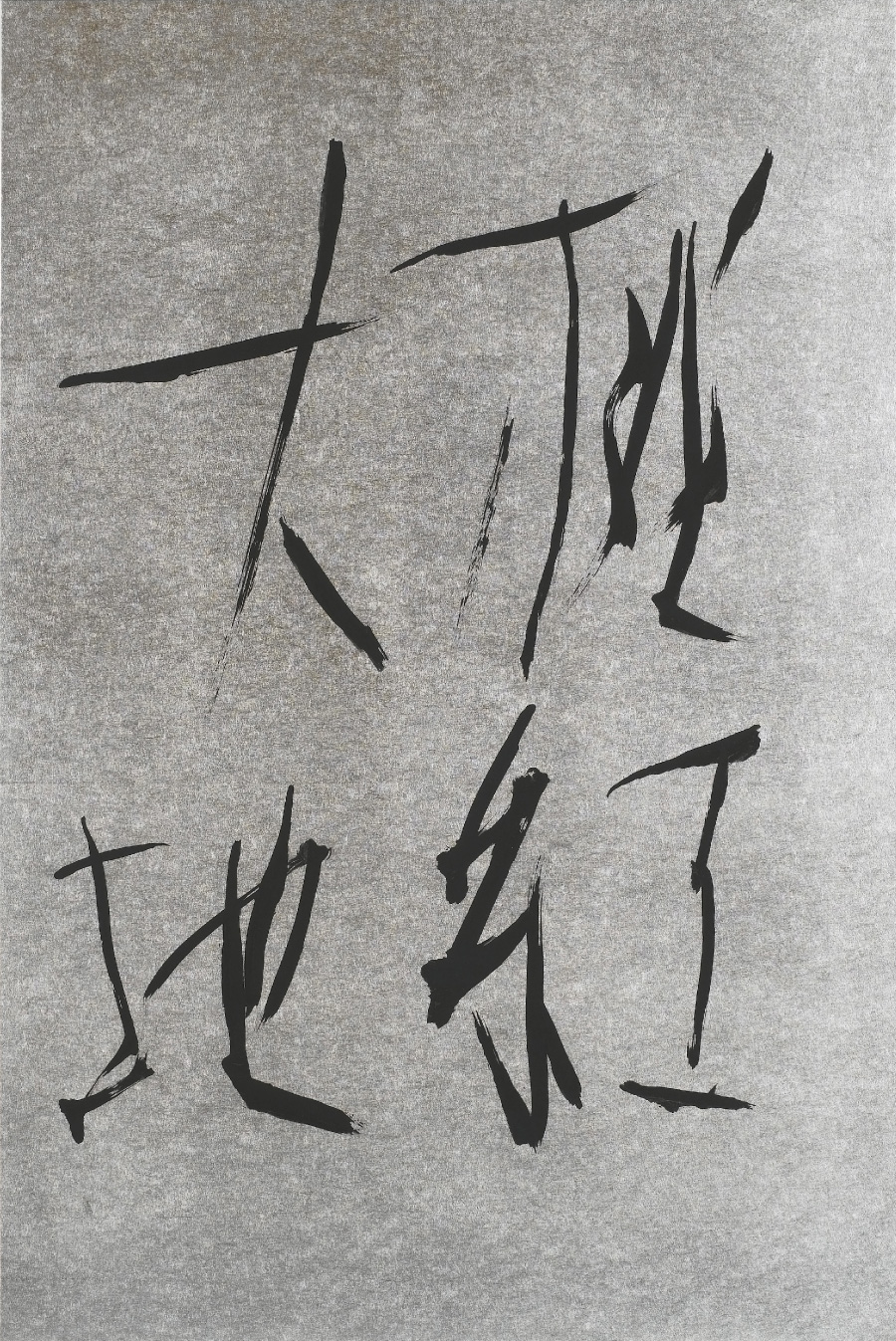
Sumi, Silver Leaf on Paper

TOKO SHINODAPROFILE
Born in 1913 in Dalian, China. The following year, she moved back to Tokyo due to her father's job transfer.
At the age of 5, she first encountered ink and brush under her father's guidance and continued to refine her calligraphy skills through self-study. After World War II, she began deconstructing characters and creating abstract works with ink.
In 1956, she went to the United States, where she held solo exhibitions in cities such as New York, Boston, Chicago, Paris, and Cincinnati. After returning to Japan in 1958, she worked on murals, wall paintings, and reliefs in architecture, as well as large-scale works like the fusuma paintings for the main hall of Zojoji Temple in Tokyo's Shiba district. Additionally, her work spanned various fields, including lithographs, book cover designs, titles, and essays. In 1970, she moved to Minami-Aoyama, Tokyo, where she established her studio.
In 1979, she received the 27th Japan Essayist Club Award for her first essay collection, "Sumi-iro" (Ink Color).
In 2005, she was selected as one of the "100 Japanese People Respected by the World" by *Newsweek Japan*. That same year, she created paintings over five meters in length, continuing to explore new forms of abstract expression through ink painting, with her dynamic brushstrokes enduring until her final years.
She passed away in March 2021.
Collection Introduction
The Gifu Collection of Modern Art holds over 1,000 works by Toko Shinoda.
Here, we introduce some of the collection with explanations.

Toko Ri Haku, 2004
This four-panel folding screen is inspired by a phrase from the "Zenrin Kushu" collection: "Peach blossoms are red, plum blossoms are white, and roses are purple." Toko took her artist name, "Toko," from this phrase. It was given to her by her father, who appreciated Chinese poetry, as Toko was born in March when peach blossoms bloom. In this work, the two panels on the right feature thin silver lines representing the white of plum blossoms, while the left two panels incorporate the red of peach blossoms with a red surface. The phrase "Peach blossoms are red, plum blossoms are white, and roses are purple" continues with, "Ask the spring wind, it knows not all." While the spring wind blows evenly, the colors of flowers vary. Just like how peach blossoms bloom in fiery red and plum blossoms in delicate white, Toko’s way of living and artistic pursuit of ink painting is reflected in this work.

Omoi, 2001
A thin, dignified ink line quietly stands at the center of the canvas. This represents the single character "Moon," deconstructed to its pre-character form. Toko wrote in her essays, "I gradually became fascinated with the freshness, strength, and directness of ancient pictographs created by people before the advent of written characters." From the 1970s, forms based on pictographic characters started appearing in her works, and the abstract shape derived from the character "Moon" became one of her significant motifs.

Traveler, 1965
This piece was exhibited at Toko's solo exhibition at the Betty Parsons Gallery in New York in 1968. She held numerous solo exhibitions abroad, and it was particularly at this gallery that her reputation in the international art scene became firmly established. In the 1960s, her works became larger, and the elegant and free-flowing strokes and Eastern aesthetic of negative space faded, replaced by works constructed with thick lines and planes, adopting Western painting compositions.

Sound, 1950-54
While contemporary avant-garde calligraphers grappled with the boundary between calligraphy and painting, Toko, even as she engaged with Kana calligraphy as a calligrapher, began to distance herself from characters and tentatively explore abstract forms. Eventually, she left the world of calligraphy and moved to the United States in 1956.
This work is a precious piece that demonstrates Toko's exploration and trial-and-error period before her departure to the U.S. As she felt that the shapes of characters were borrowed forms, she gradually found it intolerable in her pursuit of autonomous expression, and even as a calligrapher, she was already leaning towards pure form creation at that time.

Shiratsuyu, Before 1956
This work emerged from Toko’s process of pursuing her own form of expression by stretching or distorting the shapes of characters. The character "Shiratsuyu" (white dew) is written in this work, maintaining a sense of calligraphy. It was created during a time when so-called "unreadable calligraphy" in avant-garde calligraphy was attracting attention.
Goods
The following goods are currently available for purchase only within the Toko Museum.
